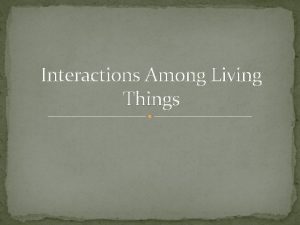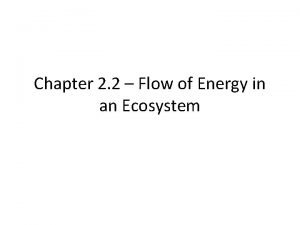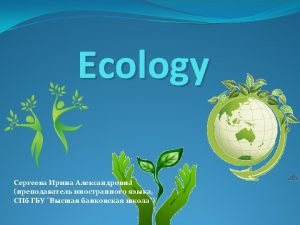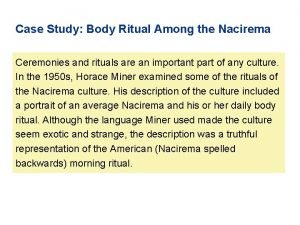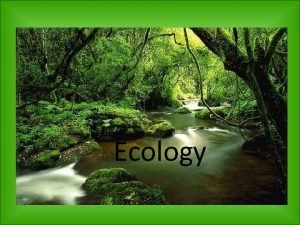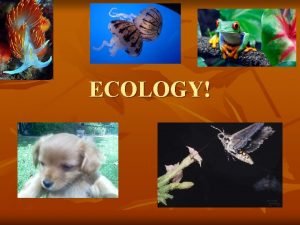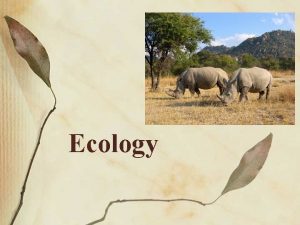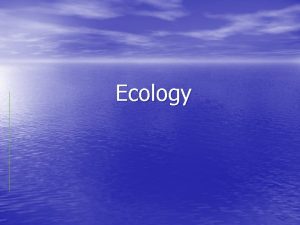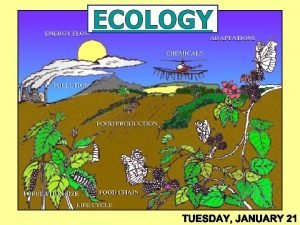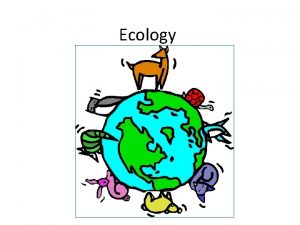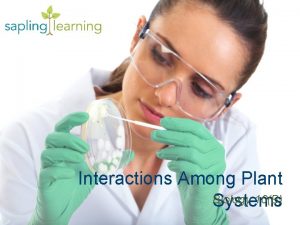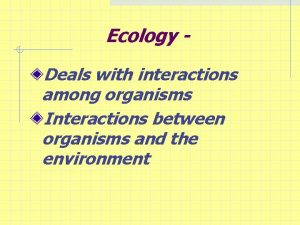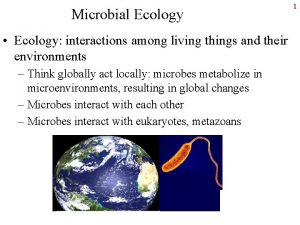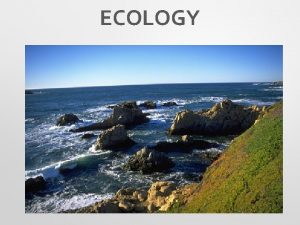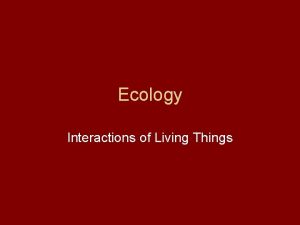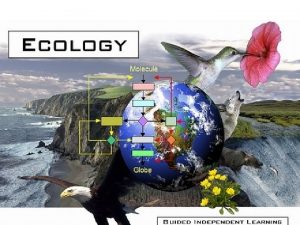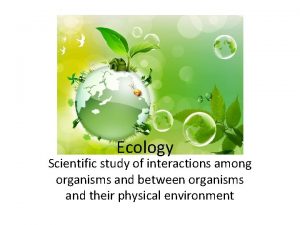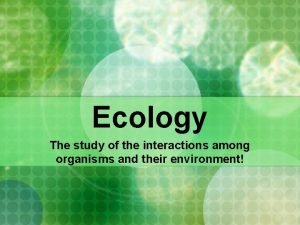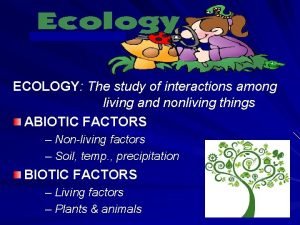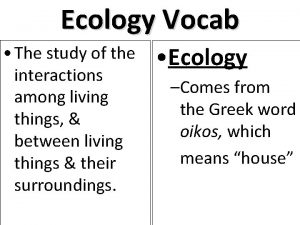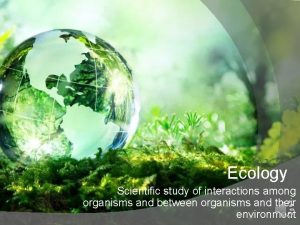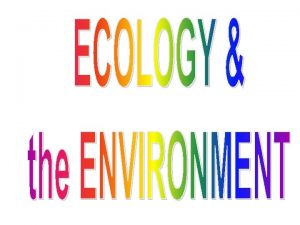Principles of Ecology Study of the interactions among






















- Slides: 22

Principles of Ecology

Study of the interactions among organisms and their environments

Nonliving part of an organisms environment Wind Climate Rain Temp Light

Living parts of an organisms environment Plants Animals

Cell Tissue Organ System Organism Populations Communities Ecosystems Biosphere Remember these?

Group of organisms of one species that interbreed and live in the same place at the same time.

Collection of interacting populations

Made up of the interactions among the populations in a community and the community’s physical surroundings (abiotic)

Terrestrial---land based Aquatic---freshwater and saltwater

Portion of the earth that supports living things (extends from the bottoms of the oceans to high in the atmosphere)

Place where an organism lives out its life (home)

Role and position a species has in its environment (job)

Symbiosis – close and permanent association among organisms of different species (meaning living together) This bird keeps his teeth clean The bird gets food

Commensalism – one species benefits and the other species is neither harmed nor benefited

Mutualism – both species benefit The bee gets fed, the flower reproduces (pollen)

Parasitism – one organism benefits at the expense of the other

Energy is the ability to do work Energy takes the form of a pyramid as it flows through a community. Ultimate energy source = SUN

Autotrophs – Producers Organisms make their own food (plants, bacteria, some algae)

Organisms that depend on others for their food Herbivores – plant eaters Carnivores – meat eaters Omnivores – eat both

Scavengers – eat animals that are already dead Decomposers – feed of dead and decaying matter Fungi Bacteria protozoan

Energy is transferred in a community by means of a chain

Food web is an expression of all the possible feeding relationships at each trophic level in a community
 Congress formal and informal powers
Congress formal and informal powers Abiotic factor
Abiotic factor Interactions among living things
Interactions among living things Principles of ecology chapter 2
Principles of ecology chapter 2 Section 1 organisms and their relationships
Section 1 organisms and their relationships Principles of ecology chapter 2
Principles of ecology chapter 2 Principles of ecology organisms and their relationships
Principles of ecology organisms and their relationships Principles of ecology chapter 2 section 1 answer key
Principles of ecology chapter 2 section 1 answer key Principles of ecology 2 flow of energy in an ecosystem
Principles of ecology 2 flow of energy in an ecosystem Biology ecology study guide answer key
Biology ecology study guide answer key Chapter 3 section 1 community ecology answer key
Chapter 3 section 1 community ecology answer key Ecology is the study that helps to preserve
Ecology is the study that helps to preserve Body ritual among the nacirema ethnocentrism
Body ritual among the nacirema ethnocentrism Hình ảnh bộ gõ cơ thể búng tay
Hình ảnh bộ gõ cơ thể búng tay Ng-html
Ng-html Bổ thể
Bổ thể Tỉ lệ cơ thể trẻ em
Tỉ lệ cơ thể trẻ em Chó sói
Chó sói Tư thế worm breton
Tư thế worm breton Hát lên người ơi alleluia
Hát lên người ơi alleluia Các môn thể thao bắt đầu bằng từ đua
Các môn thể thao bắt đầu bằng từ đua Thế nào là hệ số cao nhất
Thế nào là hệ số cao nhất Các châu lục và đại dương trên thế giới
Các châu lục và đại dương trên thế giới


